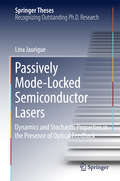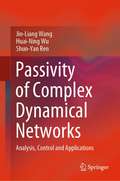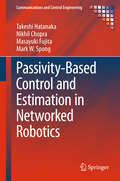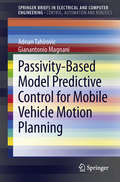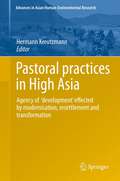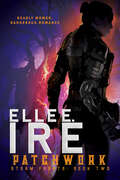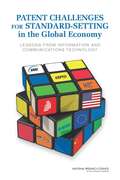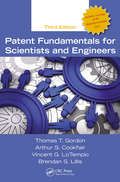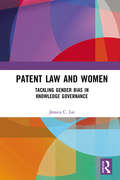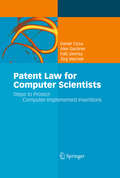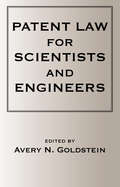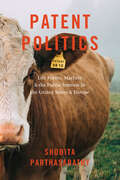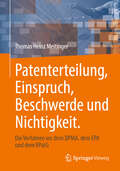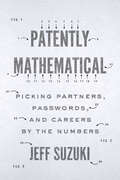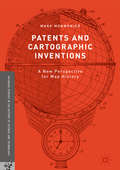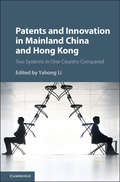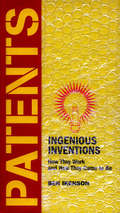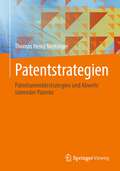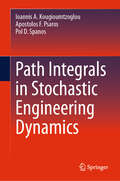- Table View
- List View
Passively Mode-Locked Semiconductor Lasers
by Lina JaurigueThis thesis investigates the dynamics of passively mode-locked semiconductor lasers, with a focus on the influence of optical feedback on the noise characteristics. The results presented here are important for improving the performance of passively mode-locked semiconductor lasers and, at the same time, are relevant for understanding delay-systems in general. The semi-analytic results developed are applicable to a broad range of oscillatory systems with time-delayed feedback, making the thesis of relevance to various scientific communities. Passively mode-locked lasers can produce pulse trains and have applications in the contexts of optical clocking, microscopy and optical data communication, among others. Using a system of delay differential equations to model these devices, a combination of numerical and semi-analytic methods is developed and used to characterize this system.
Passivity of Complex Dynamical Networks: Analysis, Control and Applications
by Jin-Liang Wang Huai-Ning Wu Shun-Yan RenThis book intends to introduce some recent results on passivity of complex dynamical networks with single weight and multiple weights. The book collects novel research ideas and some definitions in complex dynamical networks, such as passivity, output strict passivity, input strict passivity, finite-time passivity, and multiple weights. Furthermore, the research results previously published in many flagship journals are methodically edited and presented in a unified form. The book is likely to be of interest to university researchers and graduate students in Engineering and Mathematics who wish to study the passivity of complex dynamical networks.
Passivity-Based Control and Estimation in Networked Robotics
by Masayuki Fujita Takeshi Hatanaka Nikhil Chopra Mark W. SpongHighlighting the control of networked robotic systems, this book synthesizes a unified passivity-based approach to an emerging cross-disciplinary subject. Thanks to this unified approach, readers can access various state-of-the-art research fields by studying only the background foundations associated with passivity. In addition to the theoretical results and techniques, the authors provide experimental case studies on testbeds of robotic systems including networked haptic devices, visual robotic systems, robotic network systems and visual sensor network systems. The text begins with an introduction to passivity and passivity-based control together with the other foundations needed in this book. The main body of the book consists of three parts. The first examines how passivity can be utilized for bilateral teleoperation and demonstrates the inherent robustness of the passivity-based controller against communication delays. The second part emphasizes passivity's usefulness for visual feedback control and estimation. Convergence is rigorously proved even when other passive components are interconnected. The passivity approach is also differentiated from other methodologies. The third part presents the unified passivity-based control-design methodology for multi-agent systems. This scheme is shown to be either immediately applicable or easily extendable to the solution of various motion coordination problems including 3-D attitude/pose synchronization, flocking control and cooperative motion estimation. Academic researchers and practitioners working in systems and control and/or robotics will appreciate the potential of the elegant and novel approach to the control of networked robots presented here. The limited background required and the case-study work described also make the text appropriate for and, it is hoped, inspiring to students.
Passivity-Based Model Predictive Control for Mobile Vehicle Motion Planning
by Adnan Tahirovic Gianantonio MagnaniPassivity-based Model Predictive Control for Mobile Vehicle Navigation represents a complete theoretical approach to the adoption of passivity-based model predictive control (MPC) for autonomous vehicle navigation in both indoor and outdoor environments. The brief also introduces analysis of the worst-case scenario that might occur during the task execution. Some of the questions answered in the text include: * how to use an MPC optimization framework for the mobile vehicle navigation approach; * how to guarantee safe task completion even in complex environments including obstacle avoidance and sideslip and rollover avoidance; and * what to expect in the worst-case scenario in which the roughness of the terrain leads the algorithm to generate the longest possible path to the goal. The passivity-based MPC approach provides a framework in which a wide range of complex vehicles can be accommodated to obtain a safer and more realizable tool during the path-planning stage. During task execution, the optimization step is continuously repeated to take into account new local sensor measurements. These ongoing changes make the path generated rather robust in comparison with techniques that fix the entire path prior to task execution. In addition to researchers working in MPC, engineers interested in vehicle path planning for a number of purposes: rescued mission in hazardous environments; humanitarian demining; agriculture; and even planetary exploration, will find this SpringerBrief to be instructive and helpful.
Past, Present and Future of Computing Education Research: A Global Perspective
by Mikko Apiola Sonsoles López-Pernas Mohammed SaqrThis book presents a collection of meta-studies, reviews, and scientometric analyses that together reveal a fresh picture about the past, present, and future of computing education research (CER) as a field of science. The book begins with three chapters that discuss and summarise meta-research about the foundations of CER, its disciplinary identity, and use of research methodologies and theories. Based on this, the book proceeds with several scientometric analyses, which explore authors and their collaboration networks, dissemination practices, international collaboration, and shifts in research focus over the years. Analyses of dissemination are deepened in two chapters that focus on some of the most influential publication venues of CER. The book also contains a series of country-, or region-level analyses, including chapters that focus on the evolution of CER in the Baltic Region, Finland, Australasia, Israel, and in the UK & Ireland. Two chapters present case studies of influential CER initiatives in Sweden and Namibia. This book also includes chapters that focus on CER conducted at school level, and cover crucially important issues such as technology ethics, algorithmic bias, and their implications for CER.In all, this book contributes to building an understanding of the past, present and future of CER. This book also contributes new practical guidelines, highlights topical areas of research, shows who to connect with, where to publish, and gives ideas of innovative research niches. The book takes a unique methodological approach by presenting a combination of meta-studies, scientometric analyses of publication metadata, and large-scale studies about the evolution of CER in different geographical regions. This book is intended for educational practitioners, researchers, students, and anyone interested in CER. This book was written in collaboration with some of the leading experts of the field.
Pasteur and Modern Science
by Rene DubosThis is a fresh account of the extraordinary life of Louis Pasteur, and the monumental impact he had on biochemistry, microbiology, bacteriology and immunology.
Pastoral practices in High Asia
by Hermann KreutzmannIn conventional views, pastoralism was classified as a stage of civilization that needed to be abolished and transcended in order to reach a higher level of development. In this context, global approaches to modernize a rural society have been ubiquitous phenomena independent of ideological contexts. The 20th century experienced a variety of concepts to settle mobile groups and to transfer their lifestyles to modern perceptions. Permanent settlements are the vivid expression of an ideology-driven approach. Modernization theory captured all walks of life and tried to optimize breeding techniques, pasture utilization, transport and processing concepts. New insights into other aspects of pastoralism such as its role as an adaptive strategy to use marginal resources in remote locations with difficult access could only be understood as a critique of capitalist and communist concepts of modernization. In recent years a renaissance of modernization theory-led development activities can be observed. Higher inputs from external funding, fencing of pastures and settlement of pastoralists in new townships are the vivid expression of 'modern' pastoralism in urban contexts. The new modernization programme incorporates resettlement and transformation of lifestyles as to be justified by environmental pressure in order to reduce degradation in the age of climate change.
Patchwork (Storm Fronts #2)
by Elle E. IreStorm Fronts: Book TwoEmpath Kelly LaSalle means everything to cybernetic soldier Vick Corren—and Kelly deserves a partner who can love her in a romantic way. For the first time since receiving her robotic enhancements and an AI that makes her faster and stronger than the average merc, Vick thinks she can be that person. Vick wants Kelly for life, and she’ll do whatever it takes to be worthy. A holiday on a tropical planet seems the perfect time for Vick to demonstrate her commitment. And she has big plans. But the best intentions unravel when they’re pursued by a rival mercenary company that wants Vick’s technology—with or without her cooperation. A competitor for Kelly’s affection is determined to tear them apart, and a lover from Vick’s past has depraved plans of her own. Vick might not be able to save their lives without giving herself over to the machine she’s trying so hard to transcend.
Patent Challenges for Standard-Setting in the Global Economy
by Keith MaskusPatent Challenges for Standard-Setting in the Global Economy: Lessons from Information and Communication Technology examines how leading national and multinational standard-setting organizations (SSOs) address patent disclosures, licensing terms, transfers of patent ownership, and other issues that arise in connection with developing technical standards for consumer and other microelectronic products, associated software and components, and communications networks including the Internet. Attempting to balance the interests of patent holders, other participants in standard-setting, standards implementers, and consumers, the report calls on SSOs to develop more explicit policies to avoid patent holdup and royalty-stacking, ensure that licensing commitments carry over to new owners of the patents incorporated in standards, and limit injunctions for infringement of patents with those licensing commitments. The report recommends government measures to increase the transparency of patent ownership and use of standards information to improve patent quality and to reduce conflicts of laws across countries.
Patent Fundamentals for Scientists and Engineers
by Thomas T. Gordon Arthur S. Cookfair Vincent G. LoTempio Brendan S. LillisThe most significant overhaul of the U.S. patent laws in decades occurred with the recent passage of the Leahy-Smith America Invents Act (AIA). Understanding the law that dictates what a patent is and how a patent is obtained and enforced, and the recent changes through statute or case law litigation presents unique challenges. This third edition o
Patent Law and Women: Tackling Gender Bias in Knowledge Governance
by Jessica C. LaiThis book analyses the gendered nature of patent law and the knowledge governance system it supports. The vast majority of patented inventions are attributed to male inventors. While this has resulted in arguments that there are not enough women working in science, technology, engineering and mathematics, this book maintains that the issue lies with the very nature of patent law and how it governs knowledge. The reason why fewer women patent than men is that patent law and the knowledge governance system it supports are gendered. This book deconstructs patent law to reveal the multiple gendered binaries it embodies, and how these in turn reflect gendered understandings of what constitutes science and an invention, and a scientist and an inventor. Revealing the inherent biases of the patent system, as well as its reliance on an idea of the public domain, the book argues that an egalitarian knowledge governance system must go beyond socialised binaries to better govern knowledge creation, dissemination and maintenance. This book will appeal to scholars and policymakers in the field of patent law, as well as those in law and other disciplines with interests in law, gender and technology.
Patent Law for Computer Scientists
by Jörg Machek Daniel Closa Alex Gardiner Falk GiemsaPatent laws are different in many countries, and inventors are sometimes at a loss to understand which basic requirements should be satisfied if an invention is to be granted a patent. This is particularly true for inventions implemented on a computer. While roughly a third of all applications (and granted patents) relate, in one way or another, to a computer, applications where the innovation mainly resides in software or in a business method are treated differently by the major patent offices in the US (USPTO), Japan (JPO), and Europe (EPO). The authors start with a thorough introduction into patent laws and practices, as well as in related intellectual property rights, which also explains the procedures at the USPTO, JPO and EPO and, in particular, the peculiarities in the treatment of applications centering on software or computers. Based on this theoretical description, next they present in a very structured way a huge set of case studies from different areas like business methods, databases, graphical user interfaces, digital rights management, and many more. Each set starts with a rather short description and claim of the "invention", then explains the arguments a legal examiner will probably have, and eventually refines the description step by step, until all the reservations are resolved. All of these case studies are based on real-world examples, and will thus give an inexperienced developer an idea about the required level of detail and description he will have to provide. Together, Closa, Gardiner, Giemsa and Machek have more than 70 years experience in the patent business. With their academic background in physics, electronic engineering, and computer science, they know about both the legal and the subject-based subtleties of computer-based inventions. With this book, they provide a guide to a patent examiner's way of thinking in a clear and systematic manner, helping to prepare the first steps towards a successful patent application.
Patent Laws for Scientists and Engineers
by Avery N. GoldsteinAlthough many texts attempt to explain intellectual property law to scientists and engineers, they are ineffective because they fail to present the subject within the proper scope; they are either too expansive or too detailed for the needs of researchers and inventors. Instead of giving a mile-high view of all types of intellectual property or, at
Patent Markets in the Global Knowledge Economy
by Thierry Madiès Thierry Madiès Dominique Guellec Jean-Claude Prager Dominique GuellecThe development of patent markets should allow for better circulation of knowledge and more efficient allocation of technologies at a global level. However, the beneficial role of patents has recently come under scrutiny by those favouring 'open' innovation, and important questions have been asked, namely: How can we estimate the value of patents? How do we ensure matching between supply and demand for such specific goods? Can these markets be competitive? Can we create a financial market for intellectual property rights? In this edited book, a team of authors addresses these key questions to bring readers up to date with current debates about the role of patents in a global economy. They draw on recent developments in economic analysis but also ground the discussion with the basics of patent and knowledge economics. Striking a balance between institutional analysis, theory and empirical evidence, the book will appeal to a broad readership of academics, students and practitioners.
Patent Politics: Life Forms, Markets, and the Public Interest in the United States and Europe
by Shobita ParthasarathyOver the past thirty years, the world’s patent systems have experienced pressure from civil society like never before. From farmers to patient advocates, new voices are arguing that patents impact public health, economic inequality, morality—and democracy. These challenges, to domains that we usually consider technical and legal, may seem surprising. But in Patent Politics, Shobita Parthasarathy argues that patent systems have always been deeply political and social. To demonstrate this, Parthasarathy takes readers through a particularly fierce and prolonged set of controversies over patents on life forms linked to important advances in biology and agriculture and potentially life-saving medicines. Comparing battles over patents on animals, human embryonic stem cells, human genes, and plants in the United States and Europe, she shows how political culture, ideology, and history shape patent system politics. Clashes over whose voices and which values matter in the patent system, as well as what counts as knowledge and whose expertise is important, look quite different in these two places. And through these debates, the United States and Europe are developing very different approaches to patent and innovation governance. Not just the first comprehensive look at the controversies swirling around biotechnology patents, Patent Politics is also the first in-depth analysis of the political underpinnings and implications of modern patent systems, and provides a timely analysis of how we can reform these systems around the world to maximize the public interest.
Patente in der Praxis: Einführung für Ingenieure und Naturwissenschaftler beim ersten Umgang mit technischen Schutzrechten
by Stefan BaslerDas Buch gibt einen Einblick in die Gewerblichen Schutzrechte, im speziellen, Patente und Gebrauchsmuster. Es ist in drei Hauptkapitel eingeteilt. Das erste Kapitel gibt eine kompakte Einführung in das Patentwesen und führt wesentliche Begriffe ein. Das zweite Kapitel erläutert die Elemente einer Patentschrift. Der Leser lernt in kurzer Zeit, eine Schrift zielgerichtet zu lesen und für sich zu bewerten. Das dritte Kapitel nimmt sich verschiedener Themen an, die für Personen von Interesse sein werden, die in ihrer Fachabteilung weiterführende Aufgaben im Patentwesen innehaben oder übernehmen möchten. Ausführliche Literaturlisten geben Hinweise für weiterführende Literatur der Patentämter und allgemeiner Natur.
Patente in der Praxis: Einführung für Ingenieure und Naturwissenschaftler im ersten Umgang mit technischen Schutzrechten
by Stefan BaslerPatente und Gebrauchsmuster sind unverzichtbare Instrumente in der täglichen Arbeit von Ingenieuren und Naturwissenschaftlern. Sie spielen eine wichtige Rolle beim Schutz technischer Innovationen und veröffentlichen technisches Wissen.Dieses Buch gibt einen Einblick in die spannende Welt der technischen Schutzrechte. Nach einer kurzen Einführung erklärt es dem Leser die Struktur von Patentschriften. Dies befähigt ihn diese zielgerichtet zu lesen und in kurzer Zeit zu bewerten. Weiterführende Themen richten sich an Personen die zusätzliches Wissen im Patentwesen erwerben möchten, um z.B. in einer Fachabteilung oder einem Unternehmen ohne Patentabteilung weiterführende Aufgaben zu übernehmen oder um schutzrechtsbezogene Entscheidungen treffen zu können.
Patenterteilung, Einspruch, Beschwerde und Nichtigkeit.: Die Verfahren vor dem DPMA, dem EPA und dem BPatG
by Thomas Heinz MeitingerDieses Buch beschreibt das amtliche Patenterteilungsverfahren vor dem Deutschen Patent- und Markenamt und dem Europäischen Patentamt und gibt praktische Anleitungen, um eine zügige Patenterteilung zu erreichen. Gelingt die Patenterteilung nicht, kann der Zurückweisungsbeschluss des Patentamts durch eine sogenannte „Anmelderbeschwerde&“ angefochten werden. Ein bestehendes fremdes Patent kann innerhalb der Einspruchsfrist durch ein Einspruchsverfahren angegriffen werden. Nach Ablauf der Einspruchsfrist besteht die Möglichkeit der Nichtigerklärung des fremden Patents vor dem Bundespatentgericht. Vor dem Bundesgerichtshof in Karlsruhe finden die Nichtigkeitsberufungsverfahren statt. Außerdem gibt es noch amtliche Löschungsverfahren gegen Gebrauchsmuster, Marken und Designrechte. Alle diese Verfahren vor dem DPMA (Deutsches Patent- und Markenamt), dem EPA (Europäisches Patentamt), dem BPatG (Bundespatentgericht), dem BGH (Bundesgerichtshof), dem EUIPO (European Union Intellectual Property Office) und dem EPG (Einheitliches Patentgericht) werden in diesem Buch beschrieben.
Patentierung von Geschäftsprozessen
by Martin Moehrle Lothar WalterGeschäftsprozesse reichen von eBanking über Internetauktionen bis zur Buchung von Reisen. Sie sind ein wichtiges Feld für die Profilierung gegenüber Wettbewerbern. Die Autoren beschreiben die Grundlagen und Perspektiven der Patentierung von Geschäftsprozessen und zeigen dabei Gestaltungsoptionen für Unternehmen auf. Die Vorgehensweise - von der Patentrecherche über die Darstellung der Ergebnisse auf Patentlandkarten bis zur Ableitung von Handlungsempfehlungen für das strategische Management - wird beispielhaft auf zwei Geschäftsprozesse angewandt.
Patently Mathematical: Picking Partners, Passwords, and Careers by the Numbers
by Jeff SuzukiFascinating facts and stories behind inventions based on mathematics—from search engines to streaming video to self-correcting golf balls. How do dating sites match compatible partners? What do cell phones and sea coasts have in common? And why do computer scientists keep ant colonies? Jeff Suzuki answers these questions and more in Patently Mathematical, which explores the mathematics behind some of the key inventions that have changed our world.In recent years, patents based on mathematics have been issued by the thousands—from search engines and image recognition technology to educational software and LEGO designs. Suzuki delves into the details of cutting-edge devices, programs, and products to show how even the simplest mathematical principles can be turned into patentable ideas worth billions of dollars. Discover:• whether secure credit cards are really secure• how improved data compression made streaming video services like Netflix a hit• the mathematics behind self-correcting golf balls• why Google is such an effective and popular search engine• how eHarmony and Match.com bring couples together, and much moreCombining quirky historical anecdotes with relatable everyday examples, Suzuki makes math interesting for everyone who likes to ponder the world of numerical relationships.Praise for Jeff Suzuki’s Constitutional Calculus“An entertaining and insightful approach to the mathematics that underlies the American system of government.” —Mathematical Reviews“A breath of fresh air. . . . A reaffirmation that mathematics should be used more often to make general public policy.” —MAA Reviews
Patents and Cartographic Inventions
by Mark MonmonierThis book explores the US patent system, which helped practical minded innovators establish intellectual property rights and fulfill the need for achievement that motivates inventors and scholars alike. In this sense, the patent system was a parallel literature: a vetting institution similar to the conventional academic-scientific-technical journal insofar as the patent examiner was both editor and peer reviewer, while the patent attorney was a co-author or ghost writer. In probing evolving notions of novelty, non-obviousness, and cumulative innovation, Mark Monmonier examines rural address guides, folding schemes, world map projections, diverse improvements of the terrestrial globe, mechanical route-following machines that anticipated the GPS navigator, and the early electrical you-are-here mall map, which opened the way for digital cartography and provided fodder for patent trolls, who treat the patent largely as a license to litigate.
Patents and Innovation in China and Hong Kong: Two Systems in One Country Compared
by Yahong LiHow do patents affect innovation in Mainland China and Hong Kong? How can two patent systems operate within one country and how is innovation affected by the 'one country two systems' model? For the first time, this book links these challenging issues together and provides a comprehensive overview for government officials, law-makers, academics, law practitioners and students to understand the patent systems of Mainland China and Hong Kong. Themes examined include the interaction between the two distinctive patent regimes, the impact of patents on innovation in China's specific industries such as green tech, traditional Chinese medicines and telecommunications, the role of utility models in inflating low-quality patents and the application of good faith principle in enforcing FRAND in Mainland China, patent system reforms in Hong Kong, and the impact of these changes on innovation in the two vastly distinctive yet closely connected jurisdictions.
Patents: Ingenious Inventions How They Work and How They Came to Be
by Ben IkensonPatents is covered in bubble wrap, one of man's more ingenious creations. It includes dozens of notable patents, from the airplane, brassiere, chain saw, and fire hydrant to the Internet, parachute, plunger, and zipper. The purpose of each device is explained in accessible language, along with background about the inventor, interesting sidebars and history, and an excerpt from the original patent application. The artwork throughout includes photos of original models and patent diagrams created by the inventors themselves, annotated to show exactly how each item works.
Patentstrategien: Patentanmeldestrategien und Abwehr störender Patente
by Thomas Heinz MeitingerPatentstrategien können in Patentanmeldestrategien und Strategien zur Abwehr störender Patente unterteilt werden. In aller Regel werden Patente und nicht Patentanmeldungen als störend empfunden, da Patentanmeldungen im Gegensatz zu Patenten nicht durchgesetzt werden können bzw. da es noch überhaupt nicht bekannt ist, was überhaupt der Schutzbereich eines durchsetzungsfähigen Patents aus der Anmeldung sein wird. Der Schutzumfang wird erst durch die Patenterteilung bestimmt. Dann ist es möglich, dass der Schutzumfang der erteilten Anmeldung nicht mehr stört, da das eigene Produkt keine Patentverletzung darstellt. Außerdem ist es möglich, dass sich aus einer Patentanmeldung überhaupt kein Schutzbereich ergibt, da die Patentanmeldung zurückgewiesen wird. Eine Patentanmeldung ist eben ein noch ungeprüftes Schutzrecht. Ein eingetragenes Gebrauchsmuster ist ebenfalls ein ungeprüftes Schutzrecht, obwohl es als vollständig durchsetzbares Schutzrecht gilt. Dennoch wird es der Inhaber eines eingetragenen Gebrauchsmusters schwer haben, eine einstweilige Verfügung ohne vorherige mündliche Anhörung der Gegenseite zu erhalten. Die Chancen hierfür sind bei einem Patent deutlich besser.Der Anmelder einer Patentanmeldung wird sich spätestens kurz vor Ablauf des Prioritätsjahrs vor die Frage gestellt sehen, ob er Nachanmeldungen in ausländischen Ländern vornehmen soll. Hierbei ist es relevant, in welchen Ländern wichtige Märkte für ihn sind und in welchen Ländern die Wettbewerber ihre Produktionsanlagen haben. Außerdem benötigt der Anmelder Informationen, wie am effektivsten und am kostengünstigsten Nachanmeldungen vorzunehmen sind bzw. welche Patentanmeldestrategien angewandt werden können. Dieses Fachbuch gibt dem Leser die Informationen an die Hand, die geeignete Anmeldestrategie zu finden und störende Patente abzuwehren.
Path Integrals in Stochastic Engineering Dynamics
by Ioannis A. Kougioumtzoglou Pol D. Spanos Apostolos F. PsarosThis book organizes and explains, in a systematic and pedagogically effective manner, recent advances in path integral solution techniques with applications in stochastic engineering dynamics. It fills a gap in the literature by introducing to the engineering mechanics community, for the first time in the form of a book, the Wiener path integral as a potent uncertainty quantification tool. Since the path integral flourished within the realm of quantum mechanics and theoretical physics applications, most books on the topic have focused on the complex-valued Feynman integral with only few exceptions, which present path integrals from a stochastic processes perspective. Remarkably, there are only few papers, and no books, dedicated to path integral as a solution technique in stochastic engineering dynamics. Summarizing recently developed techniques, this volume is ideal for engineering analysts interested in further establishing path integrals as an alternative potent conceptual and computational vehicle in stochastic engineering dynamics.
